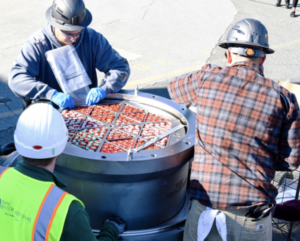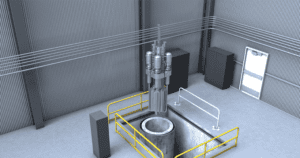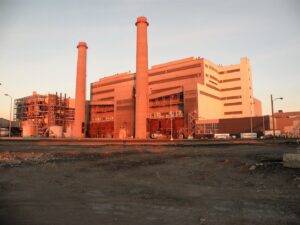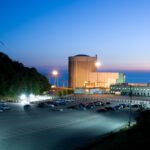The Trump administration has released a second loan disbursement of $56.8 million to Holtec International as part of an up to $1.52 billion loan guarantee for the restart of the 800-MW Palisades Nuclear Plant in Michigan. The funding, a key step in reviving the shuttered facility, reinforces a loan guarantee initially issued under the Biden administration—and marks the first publicly announced loan guarantee action under the Trump administration.
Under the Biden administration, the Department of Energy’s (DOE) Loan Programs Office (LPO) finalized the loan guarantee in September 2024. The $1.52 billion guarantee was the first issued under the Energy Infrastructure Reinvestment (EIR) program’s Title 17 Clean Energy Financing Section 1706, which Congress approved as part of the Inflation Reduction Act (IRA). The Biden administration intended loan funding to be used to bolster inspections, testing, restoration, rebuilding, and replacement of existing equipment at Palisades, which was retired by its previous owner, Entergy, in May 2022.
Holtec, which bought the plant from Entergy in June 2022, received its first disbursement of $38 million in January after securing financing through the DOE’s Loan Programs Office (LPO). The company is targeting the commercial nuclear plant’s recommissioning by the end of 2025, though that schedule will depend on Nuclear Regulatory Commission (NRC) approvals. When reopened, the upgraded Combustion Engineering pressurized water reactor (PWR) could produce baseload power until 2051 as part of the Midcontinent Independent System Operator’s (MISO) resource mix.
“Unleashing American energy dominance will require leveraging all energy sources that are affordable, reliable and secure—including nuclear energy,” said Energy Secretary Chris Wright on March 17. “Today’s action is yet another step toward advancing President Trump’s commitment to increase domestic energy production, bolster our security and lower costs for the American people.”
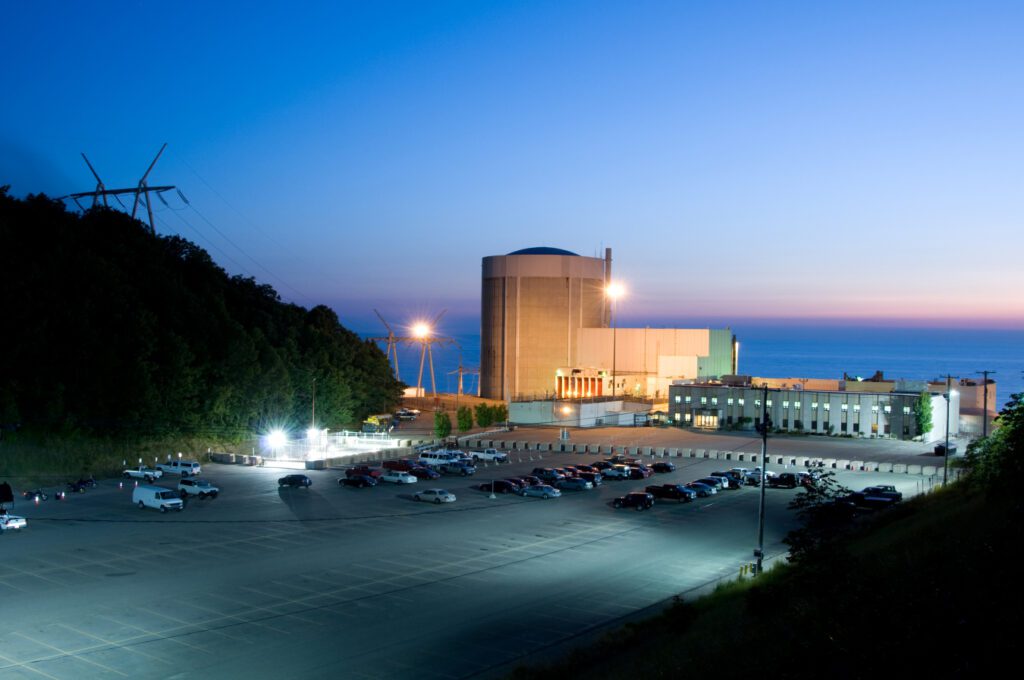
The Trump Administration’s First Public Loan Guarantee Action
The Trump administration’s decision to move forward with the Palisades loan guarantee is particularly notable given its broader efforts to freeze or reevaluate federal financial assistance programs initiated under the previous administration. In late January, the White House Office of Management and Budget (OMB) issued a directive temporarily pausing all federal grant, loan, and financial assistance programs—an action that was quickly challenged in court and later rescinded by the OMB on Jan. 29.
Despite the rescission, the White House has indicated the freeze on federal funding would remain in effect, aligning with executive orders that aim to reevaluate and align programs with the administration’s priorities.
In its final update before leaving office, the Biden administration reported that the DOE’s LPO finalized 53 deals totaling $107.57 billion in project investments over four years. This included $60.62 billion in closed loans and $46.95 billion across 28 active conditional commitments, supporting projects in advanced nuclear, grid modernization, energy storage, and domestic manufacturing.
Along with finalizing a $1.52 billion loan guarantee for Holtec’s Palisades restart, it finalized $15 billion for Pacific Gas & Electric’s (PG&E) Project Polaris, a sweeping investment in hydropower, battery storage, transmission upgrades, and virtual power plants across Northern and Central California. Other major deals include $4.9 billion for Grain Belt Express to expand high-voltage transmission, and more than $2 billion to enhance Puerto Rico’s energy resilience.
Shortly before the Trump administration took office on Jan. 16, LPO announced $22.92 billion in conditional loan commitments to eight utility companies, aiming to modernize energy infrastructure, expand clean power generation, and improve grid reliability. Asked how the agency expected the conditional commitments to fare under the incoming Trump administration, the Biden administration DOE noted that conditional commitments are legally binding agreements that obligate the funds once the conditions are met.
Holtec Plans Two SMRs at Palisades—and a Larger 10 GW Fleet
On Monday, the Trump administration underscored the rationale for its move to release the second round of disbursement for the Holtec project. “The project is projected to support or retain up to 600 high-quality jobs in Michigan—many of them filled by workers who had previously been at the plant for over 20 years,” it said.
Holtec on Feb. 3, 2025, noted the NRC issued a draft environmental assessment (EA) and finding of no significant impact (FONSI) for the power plant’s recommissioning. The draft EA covers Holtec’s requests for an exemption from the 10 CFR 50.82(a)(2) rule, which currently prohibits fuel emplacement and reactor operation, a license transfer from Holtec Decommissioning International to Palisades Energy LLC, and four License Amendment Requests (LARs) needed to resume power generation.
Holtec is meanwhile making headway on major technical and maintenance efforts to prepare the plant for its targeted restart in late 2025. Ongoing work includes primary coolant system dose reduction measures and turbine inspections. More than 560 full-time nuclear professionals and hundreds of specialty contractors are engaged in work on site, it reports. Holtec International President Kelly Trice has expressed confidence in meeting the project’s schedule, noting that the team remains “slightly ahead of target” pending final NRC approvals.
The company expects that the NRC could issue its final licensing decision by August, which would allow Palisades Energy LLC to place fuel back into the reactor vessel and resume commercial power operations. If the project schedule remains on track, the restart would mark the first-ever recommissioning of a retired U.S. commercial nuclear reactor.

Later in February, however, Holtec unveiled “Mission 2030,” an initiative to deploy the company’s flagship small modular reactors (SMR-300s) at the Palisades site in Covert Township, Michigan. The project envisions co-locating two Holtec SMR-300s with the existing 800-MW Palisades plant.
Holtec’s SMR-300 is a 300-MW pressurized water reactor (PWR) designed for simplified and efficient operations. The reactor’s below-grade placement and gravity-driven cooling eliminate reliance on active safety systems, making it “Walk-Away Safe” in the event of a loss-of-coolant accident, Holtec says. Unlike traditional large reactors, SMR-300 does not require an exclusion zone and features on-site underground used fuel storage, removing the need for immediate spent fuel transport. The design is also geared for rapid deployment and features a 2.5-year construction cycle, the company says.
Substantial progress has been made so far in site preparation at Palisades for the SMR project, bolstered by $50 million in investment. Activities so far include detailed site and environmental studies, establishing a groundwater monitoring program, and completing soil borings. Holtec said the project remains on schedule to begin the formal U.S. NRC construction permitting process early next year. In addition, the company said it has engaged in extensive public and government outreach and received strong support from community leaders and government stakeholders.
The launch of “Mission 2030” in February was notably accompanied by the signing of an expanded cooperation agreement with Hyundai Engineering & Construction (Hyundai E&C) to build a 10-GW fleet of SMR-300s in North America through the 2030s, starting with the Palisades project.

“Hyundai E&C has the most distinguished credentials as a constructor of nuclear power plants, having built and commissioned the largest reactor complex in the last decade in the UAE on schedule, which is a rare achievement in our industry,” said Holtec’s CEO Dr. Kris Singh. “Our own vertically integrated supply capability and a world-class project management organization, which has established a solid track record of completing numerous complex projects around the world without cost overruns, gives us the confidence that our ‘Mission 2030’ will be realized in full measure. We should also recognize our long-term ally and the third pillar of our SMR coalition, Mitsubishi Electric [Kobe, Japan, and Pittsburgh, U.S.] whose state-of-the-art control system will be deployed in the SMR-300 plants.”
—Sonal Patel is a POWER senior editor (@sonalcpatel, @POWERmagazine).


